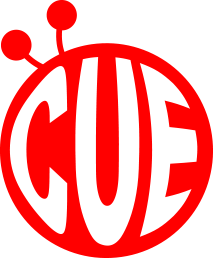英検®にチャレンジしよう! 3級の練習問題 – 読解 – 説明文 –
攻略ポイントはここ! 英検®合格への道しるべ

英検®3級の筆記試験では、第3部が読解問題になっています。読解問題は、A掲示文、Bメール文、C説明文の3タイプに分かれています。今回はC説明文の練習をしましょう。
お得な情報
小学校での英語教科化、高校・大学受験で英検が使用出来たりと、英検®受験熱は高まる一方です。
Cheer up! Englishでは英検®を受ける方におススメの学校・レビューをご紹介
英検®3級筆記試験– 第3部読解問題 C説明文
Pumpkins and Halloween
Today, we can’t imagine Halloween without pumpkins, but there were no pumpkins in Europe before Christopher Columbus.
Originally, pumpkins only existed in America and they were used by Native Americans. After Columbus got to America in the fifteenth century, Europeans began to come and they liked pumpkins. In the sixteenth century, some Europeans brought back pumpkin *seeds to their home countries. Then pumpkins were brought to Japan by the *Portuguese.
Europeans began to celebrate Halloween long before Christopher Columbus. In the eighth century, *Pope Gregory III decided to celebrate November 1 as the day of all *saints. Since then, Europeans have celebrated it as Halloween. And even before that, *Celtic people had a festival in autumn with costumes.
Then how did they celebrate Halloween without any pumpkins? If you think children before the sixteenth century had no fun, you are wrong. They used *turnips instead of pumpkins. It was maybe more difficult to *carve eyes and a smiling mouth, but a head made of a turnip looked more like a real one.
Many Japanese people began to enjoy Halloween around 2000. They already had many pumpkins, of course!
*seed 種
*Portuguese ポルトガル人
*pope 教皇
*saint 聖人
(1) When did pumpkins arrive in Europe?
1 Before the eighth century.
2 In the eighth century.
3 In the fifteenth century.
4 In the sixteenth century.
(2) Who brought pumpkins to Japan?
1 Native Americans.
2 Portuguese.
3 Christopher Columbus.
4 Pope Gregory III
(3) When did Europeans begin to celebrate Halloween?
1 Long before Native Americans began to use pumpkins.
2 Long before the arrival of pumpkins in Europe.
3 After the arrival of pumpkins in Europe.
4 After Portuguese began to eat pumpkins.
(4)What food did they use to celebrate Halloween before sixteenth century?
1 Turnips.
2 Pumpkins.
3 Tomatoes.
4 Carrots.
(5)What did a head made of a turnip look like?
1 A real pumpkin.
2 A real head.
3 A European.
4 A Japanese.
解答・解説・和訳
(1) 4 In the sixteenth century.
本文6行目にIn the sixteenth century, some Europeans brought back pumpkin *seeds to their home countries.とある。their home countriesとはEuropeのことである。
設問和訳:カボチャはいつヨーロッパに来ましたか。
1 8世紀より前
2 8世紀
3 15世紀
4 16世紀
(2) 2 Portuguese.
本文8行目にThen pumpkins were brought to Japan by the *Portuguese.とある。
設問和訳:日本にカボチャをもたらしたのは誰でしたか。
1 アメリカ先住民
2 ポルトガル人
3 クリストファー・コロンブス
4 教皇グレゴリー3世
(3)2 Long before the arrival of pumpkins in Europe.
本文第3段落は、ハロウィンの始まりについて述べている。
設問和訳:ヨーロッパの人々がハロウィンのお祝いをするようになったのはいつですか。
1 アメリカの先住民がカボチャを使うようになるずっと前
2 カボチャがヨーロッパに来るよりずっと前
3 カボチャがヨーロッパに来てから
4 ポルトガル人がカボチャを食べるようになってから
(4) 1 Turnips.
本文第4段落で、16世紀前にはカブを使っていたことがわかる。
設問和訳:16世紀前には、ハロウィーンをお祝いするためにどんな食べ物を使っていましたか。
1 カブ
2 カボチャ
3 トマト
4 ニンジン
(5) 2 A real head.
本文下から4行目but a head made of a turnip looked more like a real one. のoneはheadを指している。
設問和訳:カブで作った頭は何のようでしたか。
1 本物のカボチャ
2 本物の頭
3 ヨーロッパ人
4 日本人
本文和訳:
カボチャとハロウィン
今日、カボチャなしのハロウィンを想像することはできませんが、ヨーロッパにはクリストファー・コロンブス以前にカボチャはなかったのです。
もとはと言えば、カボチャはアメリカ大陸にしかなく、アメリカの先住民に使われていました。15世紀にクリストファー・コロンブスがアメリカ大陸に到達した後、ヨーロッパ人が来るようになり、彼らはカボチャが気に入りました。16世紀には故郷にカボチャの種を持ち帰るヨーロッパ人もいました。次いで、カボチャはポルトガル人によって日本にもたらされました。
ヨーロッパの人々がハロウィンを祝うようになったのは、クリストファー・コロンブスの時代よりずっと前です。教皇グレゴリー3世は8世紀に11月1日をすべての聖人の日として祝うことにしました。その時から、ヨーロッパの人々はこの日をハロウィンとして祝ってきました。また、それより前に、ケルト人は衣装をつけて秋のお祭りをしていました。
では、カボチャなしでどうやってハロウィンのお祝いをしていたのでしょうか。16世紀前の子どもたちにはおもしろいことなんかなかったと思ったら、間違いですよ。カボチャではなくカブを使っていたのです。おそらく目や笑っている口を彫るのはもっと難しかったかもしれませんが、カブで作った頭はもっと本物らしく見えました。
2000年ころに、多くの日本人がハロウィンを楽しむようになりました。もちろん、日本にはすでにカボチャがたくさんありました!
| ライタープロフィール●外国語人 | |
 |
英語、フランス語、外国語としての日本語を教えつつ、語学力に留まらない読む力、書く力を養成することが必要であると痛感。ヨーロッパで15年以上暮らし、とりあえず帰国。この世界の様々な地域で日常の中に潜む文化の違いが面白くて仕方がない。子育て、犬育て中。TOEIC®985点 |
※英検®は、公益財団法人 日本英語検定協会の登録商標です。このコンテンツは、公益財団法人 日本英語検定協会の承認や推奨、その他の検討を受けたものではありません。



















